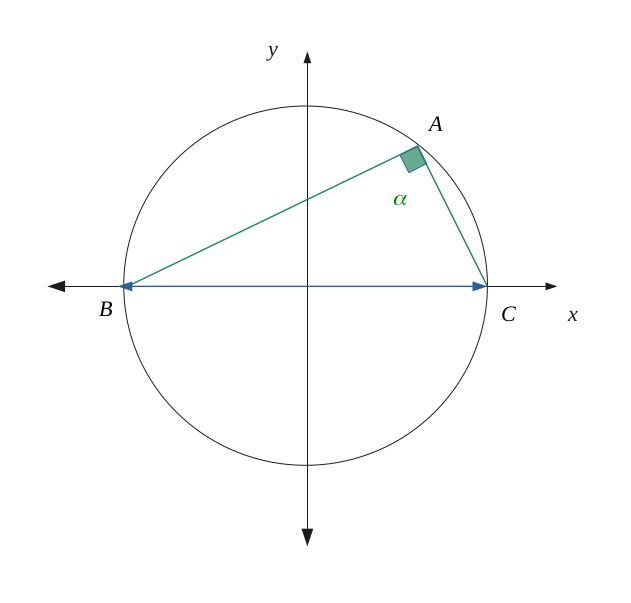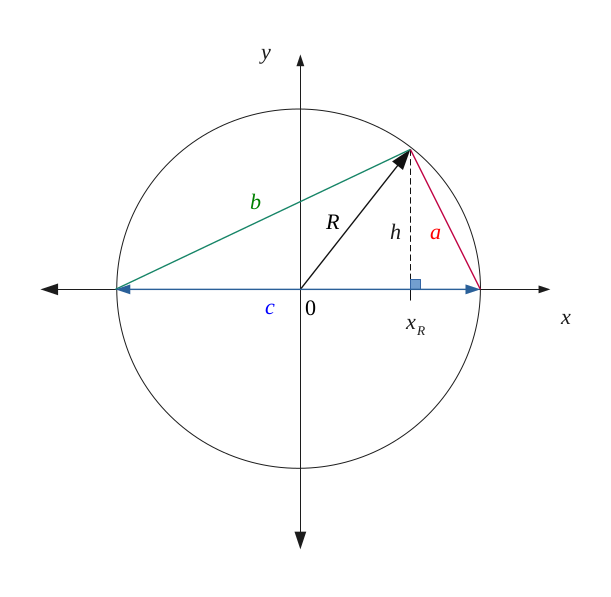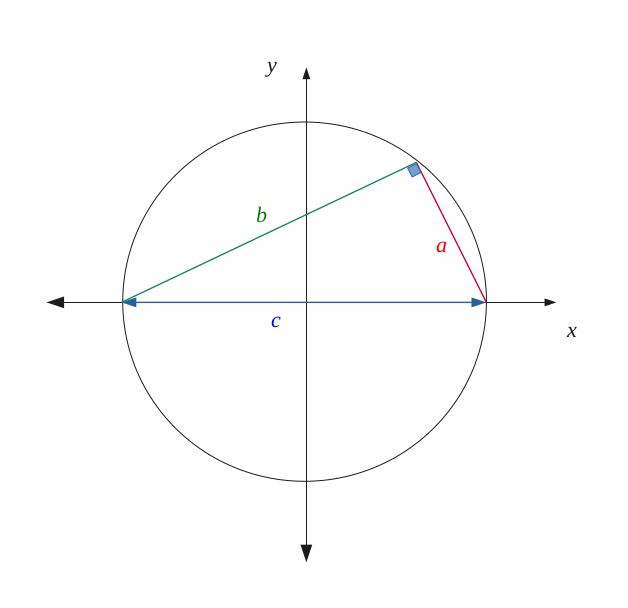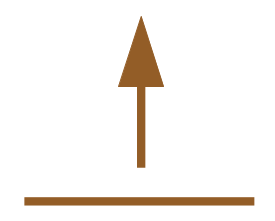




In a circle, if an inscribed triangle has the diameter of this circle as its longest side, then this triangle will be right-angled.
To do this, let us consider an orthonomous coordinate system \( (0, \vec{x}, \vec{y}) \).

We called the sides of the triangle \( a, b, c \), and we projected a height \( h \) along the length \( c \), with as a point of intersection \( x_R \) .
Likewise, we traced the radius \( R \) of the circle pointing towards the vertex between \( a \) and \( b \) of the triangle.
We will seek to demonstrate that the triangle \( \{a, b, c \} \) is right-angled between both sides \( a \) and \( b \).
We know from the Pythagorean Theorem reciprocal that:
C'est ce que nous allons démontrer.
We apply the Pythagorean Theorem on three right-angled triangles:
- that formed by \( \{h, (R - x_r), a \} \)
- that formed by \( \{h, (R + x_r), b\} \)
- that formed by \( \{h, x_R, R \} \)
We then have the following equalities:
Let us inject the expression of \( h^2 \) of the expression \( (3) \) into \( (1) \) and \( (2) \), we then obtain a new pair of equality:
$$ \Biggl \{ \begin{gather*} R^2 - x_R^2 + (R - x_R)^2 = a^2 \qquad (4) \\ R^2 - x_R^2 + (R + x_R)^2 = b^2 \qquad (5) \end{gather*} $$
Let us now calculate \( a^2 + b^2 \) by performing \( (4) + (5) \):
Many terms cancel, and we obtain:
Moreover, we know that:
Because it is our diameter by hypothesis.
And finally,
With the Pythagorean Theorem reciprocal, we showed that the triangle \( \{a, b, c \} \) is right-angled between the sides \( a \) and \( b \).

Thus,
In a circle, if an inscribed triangle has the diameter of this circle as its longest side, then this triangle will be right-angled.
 Go to the top of the page
Go to the top of the page